book
Foreword
List of Contributors
Table of Contents
chap1
Foreword
Table of Contents
Introduction
Controllabilities of mobile robots
Controllabilities
Mobile robots: from dynamics to kinematics
Kinematic model of mobile robots with trailers
Admissible paths and trajectories
Path planning and small-time controllability
Steering methods
From vector fields to effective paths
Nilpotent systems and nilpotentization
Steering chained form systems
Steering flat systems
Steering with optimal control
Nonholonomic path planning for small-time controllable systems
Toward steering methods accounting for small-time controllability
Steering methods and topological property
Approximating holonomic paths: a two step approach
Probabilistic approaches
An approach using optimization techniques
A multi-level approach
On the computational complexity of nonholonomic path planning
Other approaches, other systems
Conclusions
chap2
Foreword
Table of contents
Symmetric control systems: an introduction
Control systems and motion planning
Definitions. Basic problems
The control distance
Accessibility. The theorems of Chow and Sussmann
The shape of the accessible set in time
Regular and singular points
Distance estimates and privileged coordinates
Ball-Box Theorem
Application to complexity of nonholonomic motion planning
The car with n trailers
Introduction
Equations and notations
Examples: the car with 1 and 2 trailers
Controllability
Regular points
Bound for the degree of nonholonomy
Form of the singular locus
Polynomial systems
Introduction
Contact between an integral curve and an algebraic variety in dimension 2
The case of dimension n
Bound for the degree of nonholonomy in the plane
The general case
chap3
Foreword
Table of contents
Introduction
Models and optimization problems
Dubins' and Reeds-Shepp's car
Dubins' car with inertial angular velocity
The robot HILARE
Some results from Optimal Control Theory
Definitions
Existence of optimal paths
Necessary conditions: Pontryagin's Maximum Principle
Boltyanskii's sufficient conditions
Shortest paths for the Reeds-Shepp car
The pioneer works by Dubins and Reeds and Shepp
Characterization of a sufficient family: A local approach
A geometric approach: construction of a synthesis of optimal paths
An example of regular synthesis
Shortest paths for Dubins' Car
Symmetry and reduction properties
Construction of domains
Construction of the partition
Description of the partition
Related works
Dubins model with inertial control law
Existence of an optimal solution
Necessary conditions for a solution to be optimal
Conclusion
Related works
Time-optimal trajectories for Hilare-like mobile robots
Conclusions
chap4
Foreword
Table of contents
Introduction
Problem classification
Control issues
Open-loop vs. closed-loop control
Organization of contents
Modeling and analysis of the car-like robot
Kinematic modeling
Controllability analysis
Chained forms
Trajectory tracking
Reference trajectory generation
Control via approximate linearization
Control via exact feedback linearization
Path following and point stabilization
Control via smooth time-varying feedback
Control via nonsmooth time-varying feedback
About exponential convergence
Conclusions
Further reading
chap5
Foreword
Table of contents
Introduction
The Probabilistic Path Planner
The roadmap construction phase
The query phase
Using a directed graph
Smoothing the paths
Application to holonomic robots
Filling in the details
Simulation results
Application to nonholonomic robots
Some previous work on nonholonomic motion planning
Description of the car-like and tractor-trailer robots
Application to general car-like robots
Application to forward car-like robots
Application to tractor-trailer robots
On probabilistic completeness of probabilistic path planning
The general local topology property
Probabilistic completeness with the used local planners
On the expected complexity of probabilistic path planning
The visibility volume assumption
The path clearance assumption
The -complexity assumption
A multi-robot extension
Discretisation of the multi-robot planning problem
The super-graph approach
Retrieving the coordinated paths
Application to car-like robots
Discussion of the super-graph approach
Conclusions
chap6
Foreword
Table of contents
Introduction
Interference detection
Focusing on relevant regions
Basic interference tests
Collision detection
Four main approaches
Strategies for space and time bounding
Collision detection in motion planning
Global planners
Incremental planners
Local planners
Conclusions
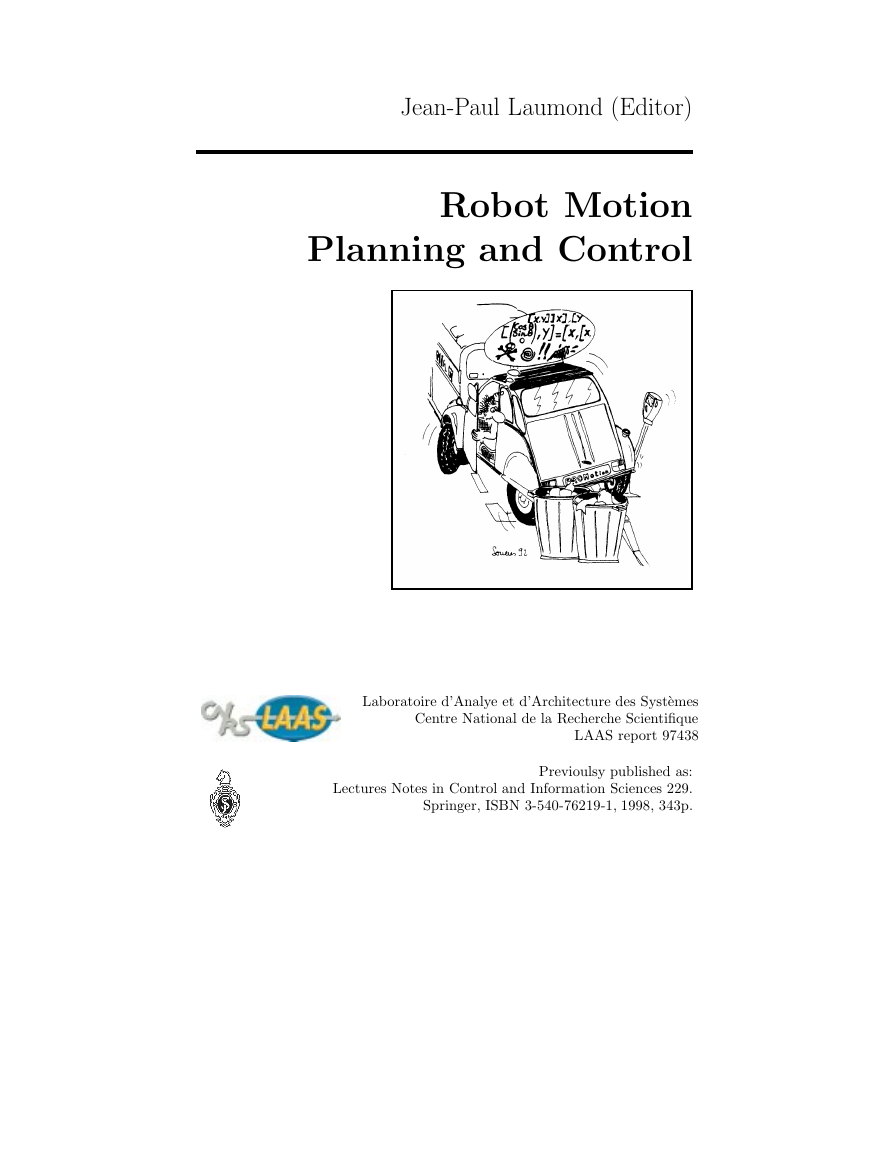

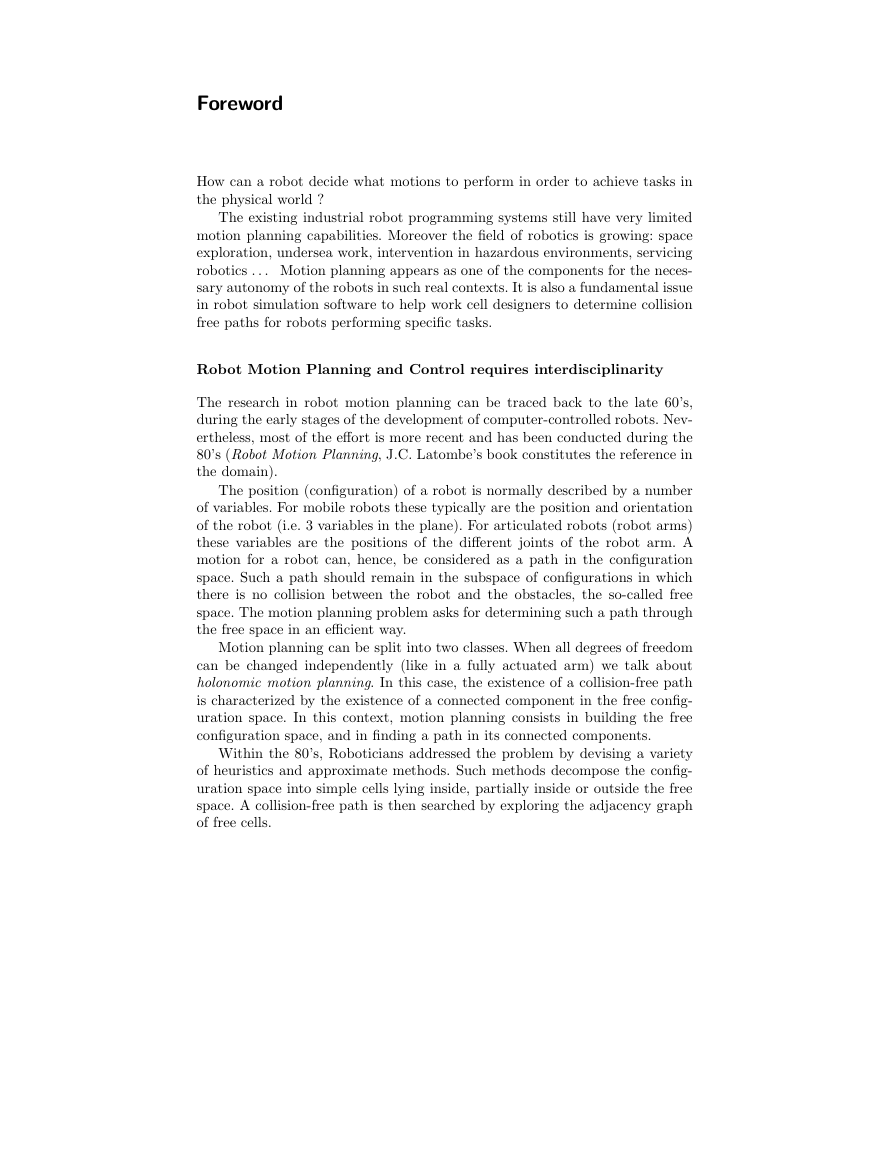
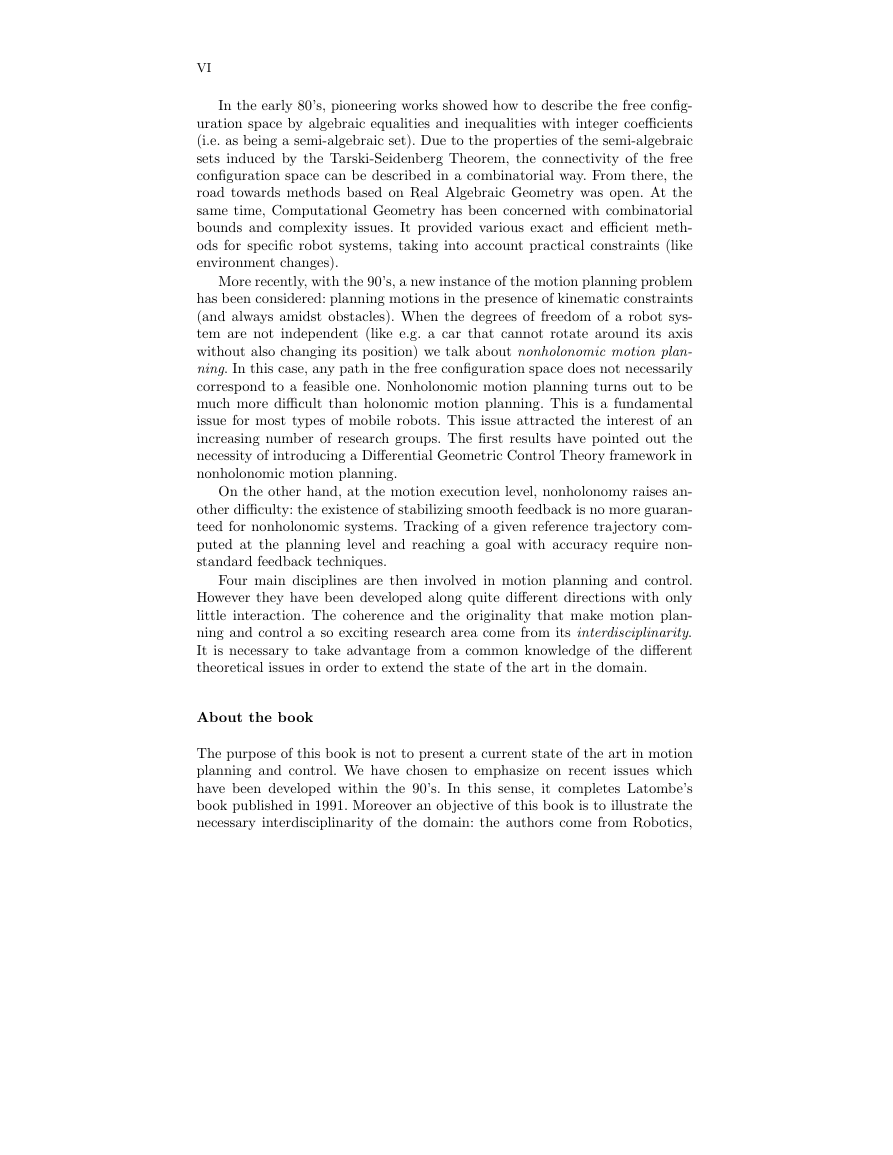
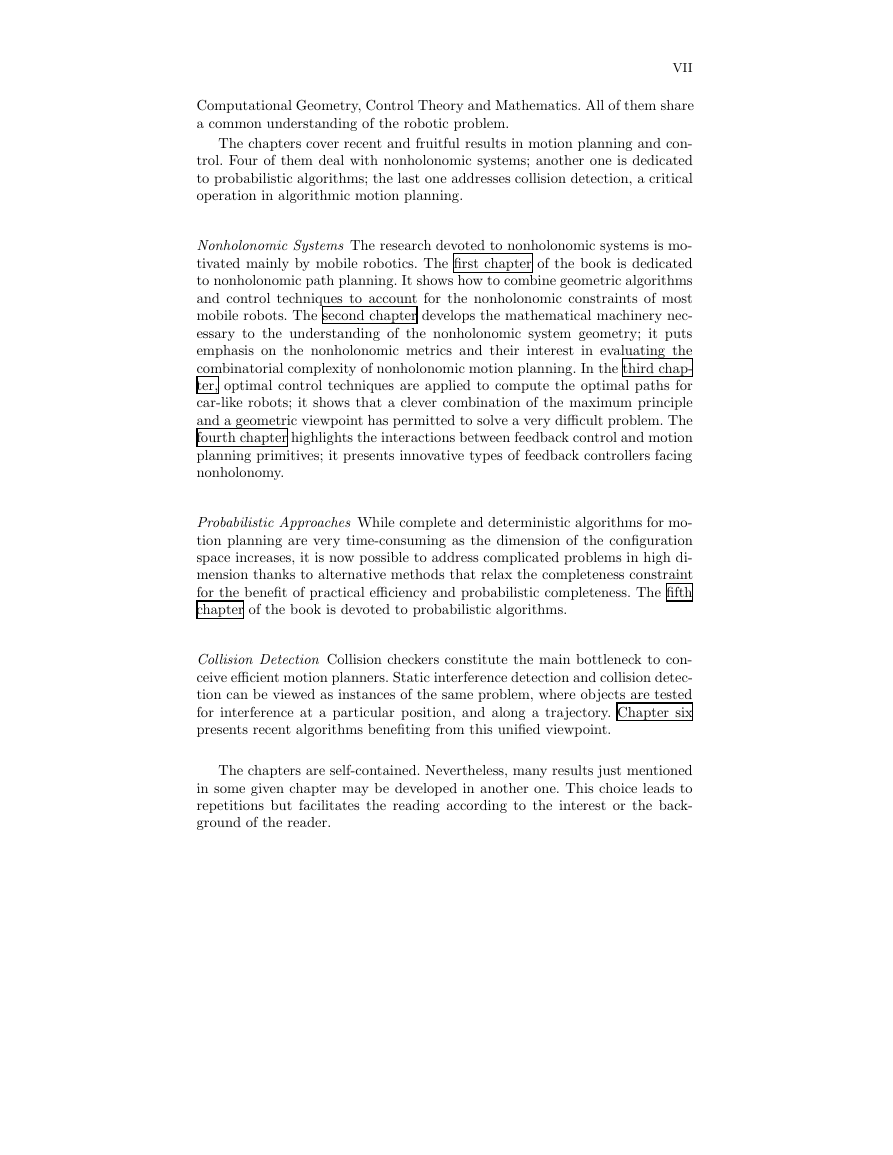
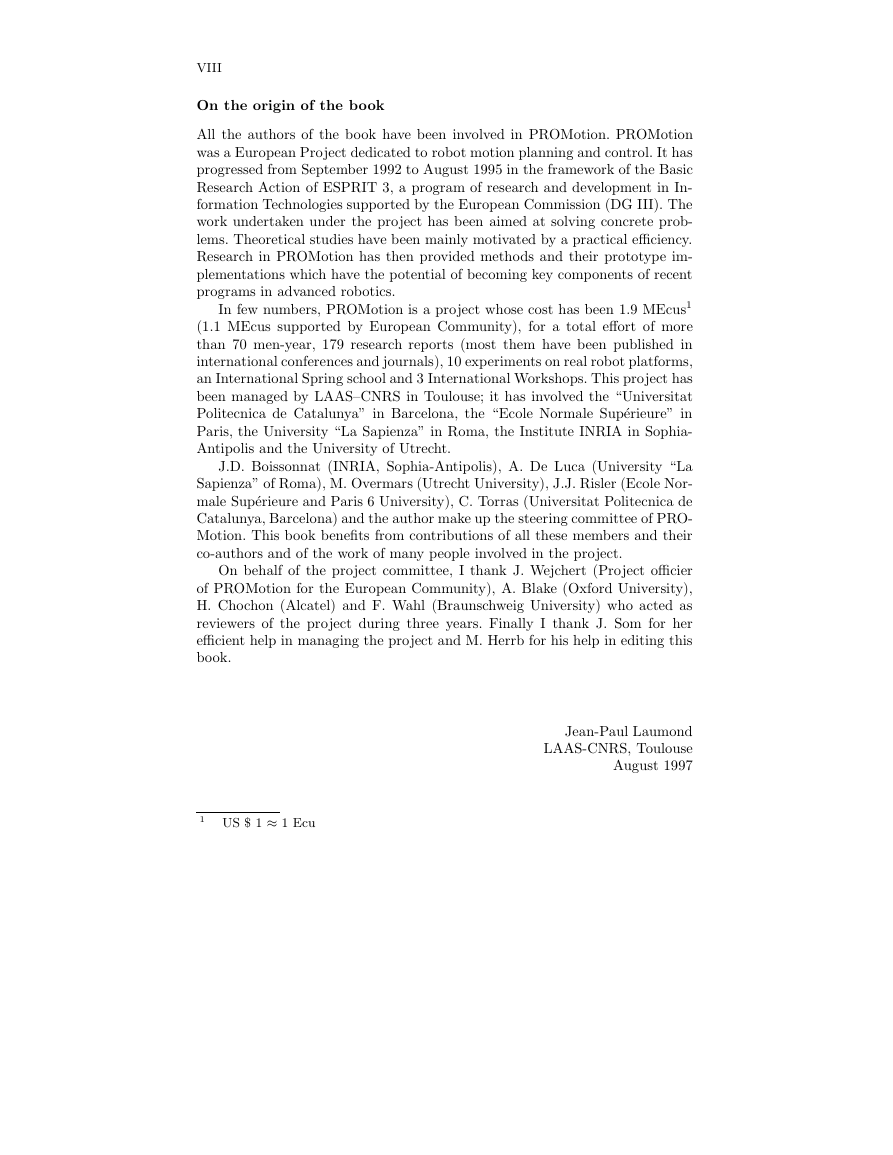
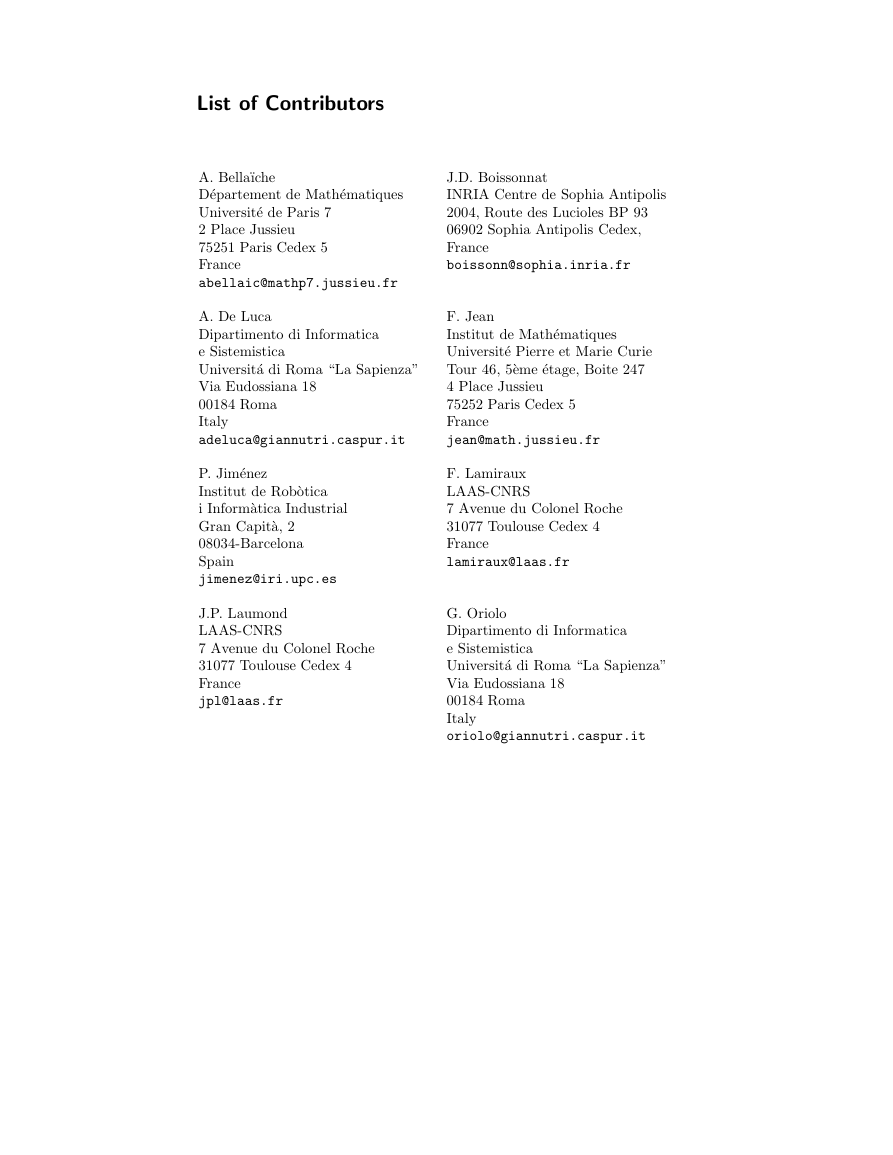
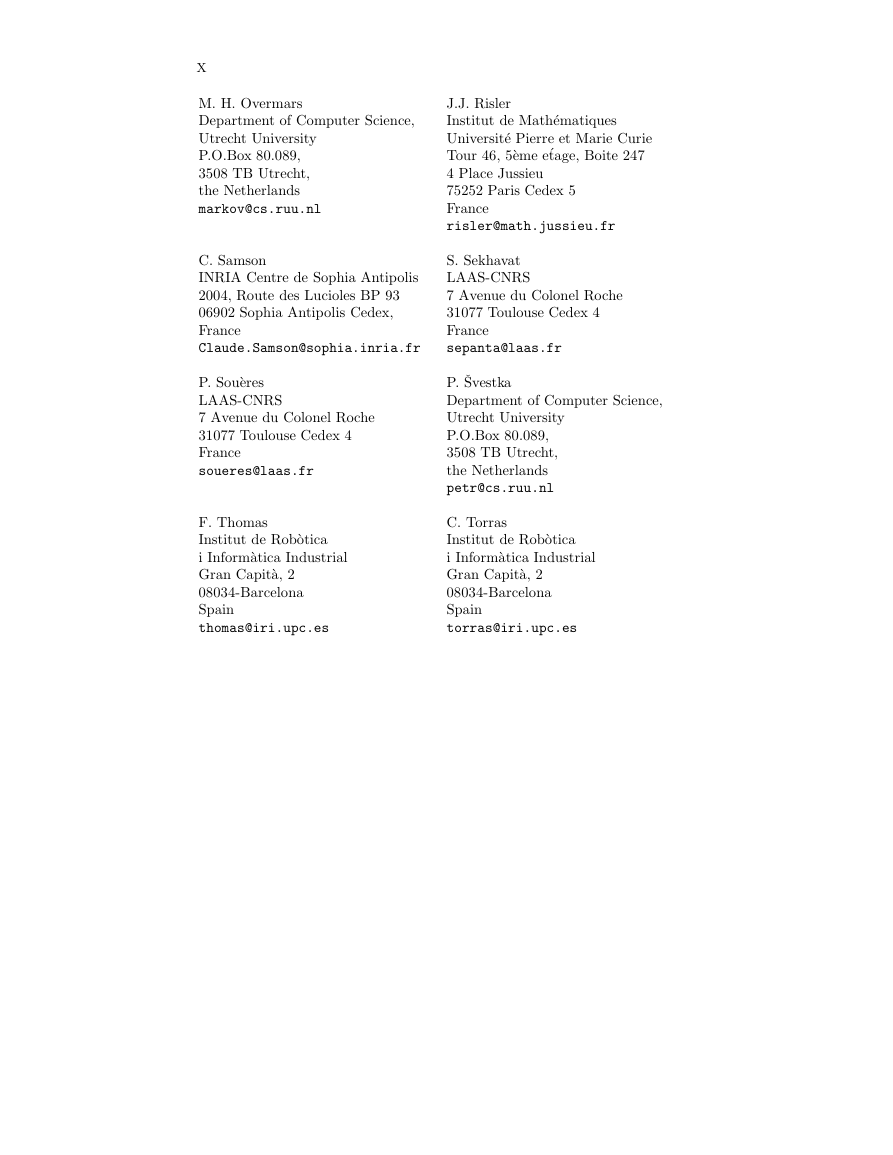








 2023年江西萍乡中考道德与法治真题及答案.doc
2023年江西萍乡中考道德与法治真题及答案.doc 2012年重庆南川中考生物真题及答案.doc
2012年重庆南川中考生物真题及答案.doc 2013年江西师范大学地理学综合及文艺理论基础考研真题.doc
2013年江西师范大学地理学综合及文艺理论基础考研真题.doc 2020年四川甘孜小升初语文真题及答案I卷.doc
2020年四川甘孜小升初语文真题及答案I卷.doc 2020年注册岩土工程师专业基础考试真题及答案.doc
2020年注册岩土工程师专业基础考试真题及答案.doc 2023-2024学年福建省厦门市九年级上学期数学月考试题及答案.doc
2023-2024学年福建省厦门市九年级上学期数学月考试题及答案.doc 2021-2022学年辽宁省沈阳市大东区九年级上学期语文期末试题及答案.doc
2021-2022学年辽宁省沈阳市大东区九年级上学期语文期末试题及答案.doc 2022-2023学年北京东城区初三第一学期物理期末试卷及答案.doc
2022-2023学年北京东城区初三第一学期物理期末试卷及答案.doc 2018上半年江西教师资格初中地理学科知识与教学能力真题及答案.doc
2018上半年江西教师资格初中地理学科知识与教学能力真题及答案.doc 2012年河北国家公务员申论考试真题及答案-省级.doc
2012年河北国家公务员申论考试真题及答案-省级.doc 2020-2021学年江苏省扬州市江都区邵樊片九年级上学期数学第一次质量检测试题及答案.doc
2020-2021学年江苏省扬州市江都区邵樊片九年级上学期数学第一次质量检测试题及答案.doc 2022下半年黑龙江教师资格证中学综合素质真题及答案.doc
2022下半年黑龙江教师资格证中学综合素质真题及答案.doc